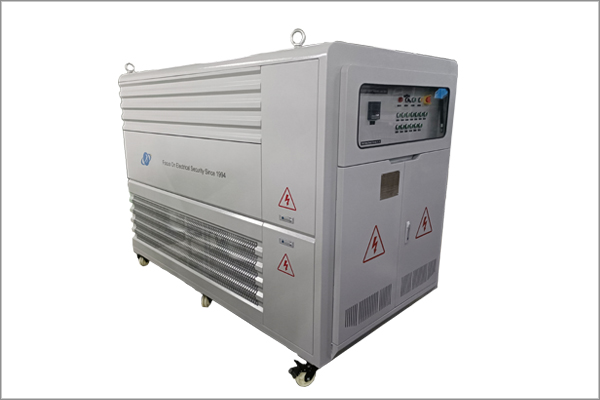Differences Between High-Voltage Load Bank and Low-Voltage Load Bank
Time:2024-10-14
Load banks, as widely used equipment in power system and electronic product testing, play a crucial role in various equipment performance evaluations. Depending on the testing requirements, load banks are mainly divided into high-voltage load banks and low-voltage load banks, which differ in testing ranges, application scenarios, testing methods, and design characteristics.
1000kW load bank
Testing Ranges
High-voltage load banks are primarily used in high-voltage, high-power testing environments. They can simulate the operating conditions of products under extreme conditions such as high temperature, high voltage, and high load, thereby testing the safety, stability, and overall performance of the products. These load banks are typically used to test high-voltage power supplies, power transformers, power protection devices, and photovoltaic inverters.
In contrast, low-voltage load banks are suitable for low-voltage, low-power testing environments. They are mainly used to test microcontrollers, smart cards, batteries, power adapters, and portable power banks. Low-voltage load banks can perform tests on electrical performance, electronic hardware functionality, communication performance, and other aspects of the products, ensuring reliability and stability under normal operating voltages.
Application Scenarios
The application scenarios of high-voltage load banks are concentrated in the field of high-voltage equipment testing in power systems, such as power substations, power plants, and large industrial equipment performance testing. These scenarios typically require equipment to tolerate high voltage and high-power loads to verify its ability to work under extreme conditions.
Low-voltage load banks are widely used in manufacturing, transportation, petrochemicals, and other industrial fields, as well as civilian sectors such as data centers, hospitals, and schools. In these scenarios, low-voltage load banks simplify power systems, reduce costs, and improve reliability through control, protection, testing, and monitoring devices that fulfill the power functions of low-voltage electrical equipment or systems.
Testing Methods
High-voltage load banks and low-voltage load banks also differ in testing methods. High-voltage load banks typically adopt a constant-power adjustable load mode, monitoring the product's workload in real-time by controlling load current and voltage. This testing method accurately simulates load changes in high-voltage equipment during actual operation, assessing its performance and stability.
Low-voltage load banks generally use a constant-voltage adjustable load mode, achieving the corresponding load conditions by controlling the test voltage and current. This testing method precisely measures the electrical performance and functional performance of low-voltage equipment under specific loads, ensuring reliability and stability under normal operating conditions.
Design Characteristics
In terms of design characteristics, high-voltage load banks usually require higher voltage withstand capabilities and more stable power output to cope with complex conditions in high-voltage testing environments. At the same time, high-voltage load banks also need higher standards in safety protection to prevent electrical shocks, fires, and other potential safety hazards.
Low-voltage load banks focus more on flexibility, portability, and intelligent applications. With the development of the Internet of Things and big data technologies, low-voltage load banks are gradually achieving interconnection and information sharing between devices, improving power system efficiency and stability. Additionally, low-voltage load banks support remote monitoring and operation, making the operation and monitoring of electrical equipment or systems more convenient and intelligent.
In summary, high-voltage load banks and low-voltage load banks exhibit significant differences in testing ranges, application scenarios, testing methods, and design characteristics. Selecting the appropriate type of load bank based on specific testing requirements ensures the accuracy and reliability of test results, providing strong support for the performance evaluation of power systems and electronic products.
News Recommendation
-
 2024-09-11
2024-09-11TRIUMPH LOAD EXHIBITING AT Enlit Europe 2024 -BOOTH 7.H08
-
 2023-04-21
2023-04-21TRIUMPH LOAD EXHIBITING AT DATA CENTER WORLD GERMANY 2023-BOOTH F909
-
 2023-04-06
2023-04-06TRIUMPH LOAD EXHIBITING AT ELECTRIC POWER TECH KOREA 2023 – Booth G109
-
 2022-05-05
2022-05-05What is the role of ac load bank for power supply?
-
 2022-05-05
2022-05-05What is the role of the load bank?


